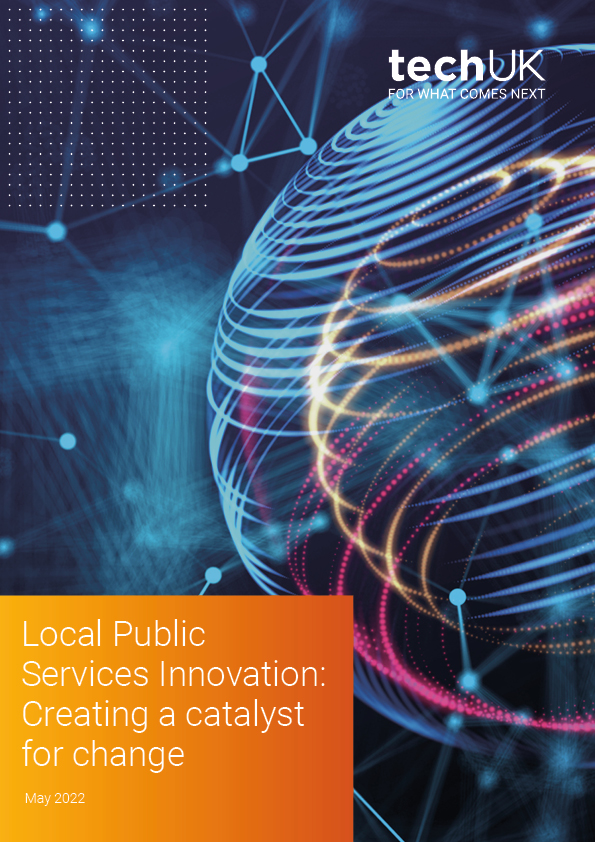Guest blog: The innovation benchmark has been set
Why is innovation in public services so important? Because people don't distinguish between public and private services when it comes to their expectations. As private organisations continue to improve user experiences at lightning speed, an experience gap on the public side can be created. We’ve grown so comfortable with technology, that our expectations have inflated massively. We expect innovation. We demand it. We want things to just work and, in some instances, we even want to be ‘wowed’. If a bank offers a great service, we expect that benchmark everywhere, whether we’re paying our Council Tax, or having our bins collected.
Innovation has now progressed from a nice-to-have, to an essential, due to the societal evolution of technology and how we use it. So how do public services evolve through innovation, to improve customer satisfaction, reduce complaints and increase productivity?
Are you ready for the next big thing?
We have no idea what the future may bring. The next life-changing revelation, service or app is just around the corner. How reactive is your organisation? Are you prepared to quickly take on the challenge (or maybe it’s even an opportunity)? It’s super-important to have a team in place which reviews, assesses, and progresses your organisation’s innovation. It will then be much easier to plan your response to whatever may spring up. Now is the time to start your innovation journey, if you haven’t already.
The good news
You don’t need a chunky budget or a dedicated full-time innovation team. Currently, the majority of public organisations and private businesses are similar, in that we’re all focused on the now, or at a push, the short term. We’ve got targets, KPI’s and objectives to meet, after all. However, we need to take innovation more seriously and look into a longer-term strategy.
This is why a part-time innovation team works well and can be a more sustainable model, depending on your organisation. How about making it part of selected team members’ objectives? Give people some extra purpose to their role by allocating a certain number of hours a week to innovation.
Thinking outside the (IT) box
Of course, it’s critical to have representatives from IT in your innovation team, but it’s really important to look to the wider business also. Be inclusive by searching out the creative people and critical thinkers in your organisation. Look for those who challenge the norm, or the ones who think differently. It’s a great opportunity to tap into your neurodiversity employees. Their thought process and the way they approach things can be completely different, providing a vast array of skills and talent, which will result in ideas and resolutions to problems that may not have been discussed, considered or even thought of before.
If at first you don’t succeed…
Make sure you’ve got tools and methodologies. You want to be able to put a problem into a pot and have a process to walk through it. Workshop and brainstorm, leaving no stone unturned. Add tea, coffee, biscuits, post-it notes, flip-charts; whatever it takes. Encourage people to be creative and silly — good ideas will come out of it. There are no stupid questions or ideas. Discount nothing.
Innovation mapping is the first priority. Next are hackathons: give people (far wider) challenges and let them go away and kick the problem around until they come up with something (more about this below). Push ideas, systems and services until they break or go wrong, otherwise how will you know what’s possible? And don’t forget, the license to mess up is absolutely essential.
A problem shared is a problem halved
We’ve talked about finding the passionate people within your organisation, but how about asking the public to help solve their own problems? When the authorities in Vienna were building its collaborative smart city, they sent out very basic apps to citizens and asked what they wanted and how they could work better. Who better to suggest solutions than the end users? What would you want from an app to pay your council tax? And don’t forget to check in with your complaints team. They’ll tell you immediately what's not working and what the public want/need.
Think about gamification. Many big brands will create a game out of a problem and put it out there. You know the Netflix algorithm that shows you which programs you may like? A chap in his back bedroom created that and won a prize. It cost Netflix peanuts in comparison to having to pay for an innovation team! They got thousands of people working on their problem, but only had to pay one. Clever stuff. Do that sort of thing in your organisation or communities and let people have fun with it. Just make sure the prizes are attractive to the audience.
None of us is as smart as all of us
So said business consultant and motivational speaker, Ken Blanchard. And he’s right. Good innovation and problem solving in public services involves your whole organisation, the public and your partners. It’s a team effort. Here at Virgin Media O2 Business, you can lean on us to explore the art of the possible. There are endless opportunities. We thrive on being part of the ecosystem for advice, support and knowledge, in addition to the seamless connectivity you’ll need to provide the innovative services of the future.
How’s your digital journey progressing? I’d love to hear about it.

Ant Morse, Head of Innovation at Virgin Media O2 Business
Local Public Services Innovation: Creating a catalyst for change
techUK, in collaboration with its Local Public Services Committee, has published a new report making the case for enhanced digital innovation adoption across the UK’s local public services to improve citizens’ lives. The report, ‘Local Public Services Innovation: Creating a catalyst for change’









